Every fishkeeping enthusiast understands the importance of a good, reliable filter in their tanks. Aquarium filters keep the water clean and healthy for fish, while also providing a place for beneficial bacteria to grow and thrive. However, of the multiple types of filters on the market, which one is right for your tank?
In this article, we will compare and contrast canister filters and sump filters. These are two of the most popular types of filters on the market and are often compared to one another for that reason. Which one is right for you? What are the pros and cons of each? And finally, which one should you buy for your tank? This article will answer all of those questions, so keep reading!
What Is The Difference Between Sump Filters and Canister Filters?
Sump Filters
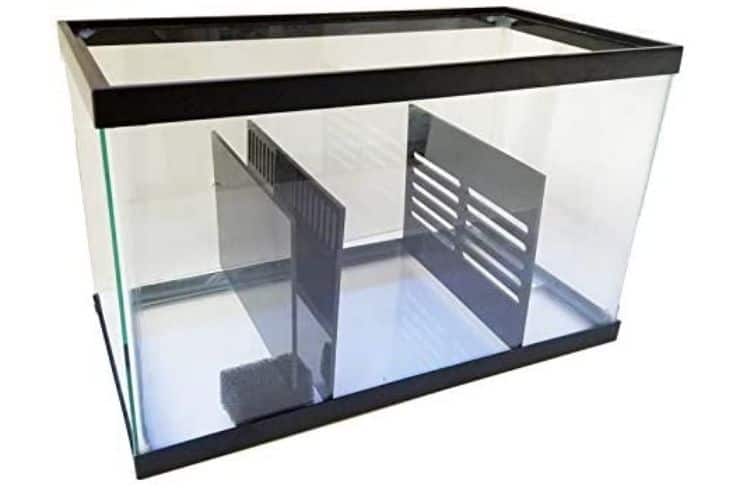
Sump filters are a type of filter that is hidden in the aquarium stand or cabinet. The sump itself is a small container that sits beneath the tank and collects water as it flows down from the tank. This water is then pumped back up to the tank, usually through a powerhead.
The main benefit of a sump filter is that it is very quiet. Since the filter is hidden away in the stand or cabinet, you don’t have to worry about it making a lot of noise. Plus, it’s also great for tanks that are in tight spaces, since the sump can be hidden away in a cabinet or closet.
Canister Filters
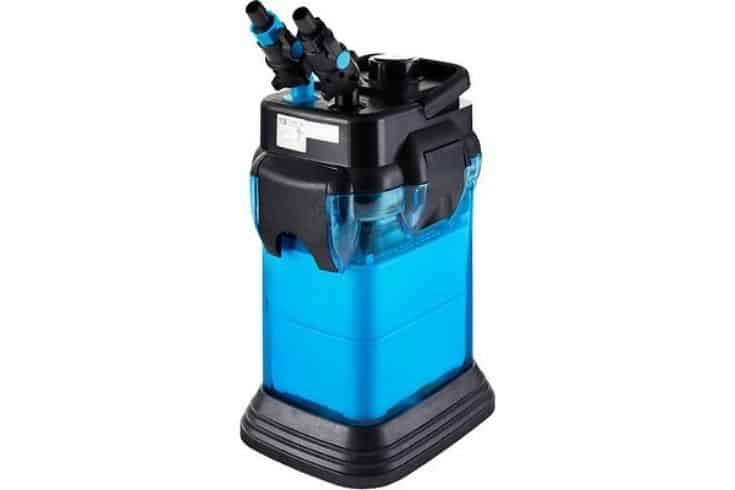
Canister filters are a type of external filter that relies heavily on powerful water pumps to move water through the filter. The water is drawn out of the tank using an external pump, passes through the filter media, and is then pumped back into the tank via a submersible return pump or the circulation pump. The intake tube for the external pump is usually placed in the tank near the bottom, while the pump outlet is placed near the top of the tank.
Filters of this variety are popular because they are very efficient at removing large amounts of waste from the water. They are also great for tanks with a high fish load, as they can handle a large amount of flow. To learn more about the best-in-class canister filters on the market, check out this article.
Canister Filter vs. Sump Filter – Which Is Best?
The filter selection process can be overwhelming, but understanding the factors that make each type of filter unique can help you make the best decision for your tank. Here is a breakdown of the key factors to consider when choosing between a canister filter and a sump filter:
Canister Filter
Easier to install
Generally more powerful
More durable
Appropriate for marine tanks and freshwater tanks
Aquarium Size (gallons) 5
A little less beginner0friendly
High degree of customizability
Compact and discreet design
More affordable
Canister Filters
Easier To Install
When it comes to ease of installation, canister filters win hands down. Canister filter installation typically only requires attaching the filter to the tank and running the hoses, which makes it a quick and easy process. Most people complete a canister filter setup in under an hour, making this a highly convenient, option.
On the other hand, sump filter installation can be a bit more complicated. The overflow box and filters need to be installed in the right place, and then the hoses need to be run to the tank. To make things even more complicated, most sump filters come with multiple chambers that each have their own filter media. This means that you need to install and configure all of the chambers correctly in order for the filter to work properly.
More Durable
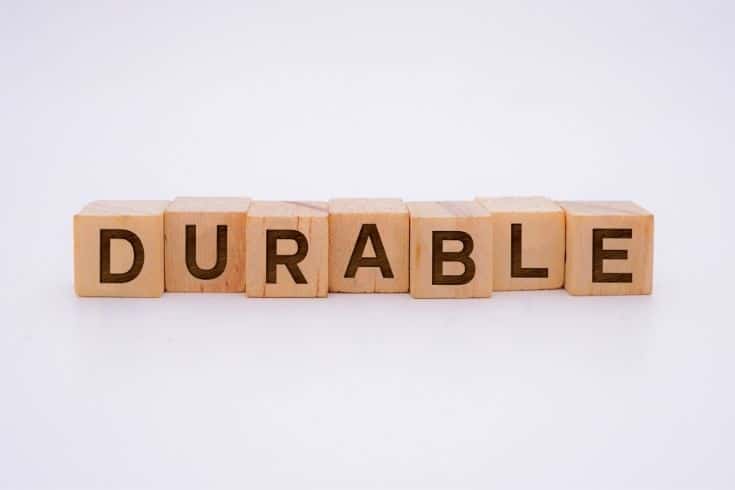
Most people reasonably expect quality filters to last for several years. When it comes to durability, canister filters definitely take the cake. The external pump and hoses that are required for canister filters make them less prone to problems caused by leaks or clogs. In addition, the cartridges are typically made from high-quality materials that can withstand a lot of wear and tear.
Sumps with trickle filters are a bit less durable than canister filters. This is because the filter media in the trickle filter needs to be replaced on a regular basis. If filter maintenance isn’t done frequently, the build-up of gunk can cause the filter to fail. Additionally, because sump filters are typically installed in the basement or garage, they’re more susceptible to moisture and flooding than other types of filters.
Highly Efficient
At the end of the day, what matters most is a filter’s ability to get the job done. When it comes to efficiency, canisters are definitely the superior filter. This is because the cartridges are densely packed with filter media, which allows for a high degree of water flow. In addition, the external pump ensures that water is pushed through the filter at a high rate.
Sump filter efficiency, on the other hand, depends on the type of filter media used. If you use high-quality media, such as activated carbon, then your sump filter will be just as efficient as a canister filter. However, if you skimp on the quality of the media, your sump filter will not be nearly as effective. Sump filter details such as the size of the chamber and the shape of the overflow box also play a role in how efficient the filter is.
Canister Filters: Common Mistakes
There are a few common mistakes that people make when using canister filters. Here are a few tips to help you avoid these mistakes:
Not Priming the Pump
One of the most common mistakes that people make with canister filters is not priming the pump properly. This means that the pump isn’t getting any water, which can cause it to overheat and fail. To avoid this, always make sure to prime the filter before use.
Not Tightening the Hoses
Another common mistake is not tightening the hoses properly. This can cause water to leak out of the filter, which will reduce its efficiency. Make sure to tighten the hoses firmly to prevent any leaks.
Not Replacing the Cartridges Enough
One of the main benefits of canister filters is that the cartridges can be replaced easily. However, if you don’t replace the cartridges often enough, the filter will not work as well as it should. Make sure to replace the cartridges regularly for optimal performance.
Sump Filters
Highly Customizable
Though there are many canister filter models on the market, each one is essentially the same. The media cartridges come pre-filled with specific types of filter media, and there is very little customization that you can do. If you’re someone who doesn’t mind being limited to what’s available in the pre-filled cartridges, then one of the myriads of canister filter options on the market may be perfect for you.
Sump filters, on the other hand, offer a high degree of customizability. This is because they come with multiple chambers, each of which can be filled with different types of filter media. You’re free to choose what media you put in each chamber, which gives you a high level of control over your filter. You can also easily change the configuration of the chambers if something isn’t working well for you.
More Cost-Effective

Canister filters are typically more expensive than sump filters. This is because they require additional components, such as an external pump and tubing, in order to function. The cost of these components, plus the cost of the filter itself, can add up quickly to rival the cost of power filters, which are notorious for their hefty price tags. A high-end canister filter may eliminate the need for these extra components, but the price tag is still significantly higher than a sump filter.
Sump filters are typically much cheaper than canister filters. This is because they require fewer components, many of which are widely available and highly affordable. In fact, many sump filters come with all of the necessary components, such as an overflow box and filters, making them a true plug-and-play option. This makes a sump filter suitable for budget-conscious aquarists.
Sump Filters: Common Mistakes
Just like with canister filters, there are a few common mistakes that people make when using sump filters. Here are a few tips to help you avoid these mistakes:
Not Installing the Overflow Box in the Right Place
If the overflow box isn’t installed in the right place, then the water will not flow into the filter properly. Make sure to install the overflow box in a location where the water will flow easily into the filter.
Not Replacing the Filter Media Enough
Just like with canister filters, if you don’t replace the filter media often enough, the sump filter will not work as well as it should. Make sure to replace the media as part of regular tank maintenance procedures.
Not Priming the Pump
Just like with canister filters, if you don’t prime the pump properly, the pump won’t get any water and it will overheat and fail. Make sure to prime the pump before use.
Does Tank Type Matter?
When it comes to choosing a filter, the specifications, use case, and type of tank you have can often dictate the best type of filter to use. For instance, if you have a 100-gallon fish tank, you will probably benefit from a canister filter rather than a sump filter. This is because canister filters are designed for larger tanks and can handle a larger bioload, thus keeping your fish tank water clean
On the other hand, if you favor regular fish tanks with a smaller tank size, a sump filter might be a better option for you. This is because a sump filter is capable of getting the job done at a fraction of the cost, and is also a more compact option that can be tucked away behind a tank wall or beneath a tank surface. For a display tank, secondary tank, or community tank with a small fish load, a canister filter might be overkill.
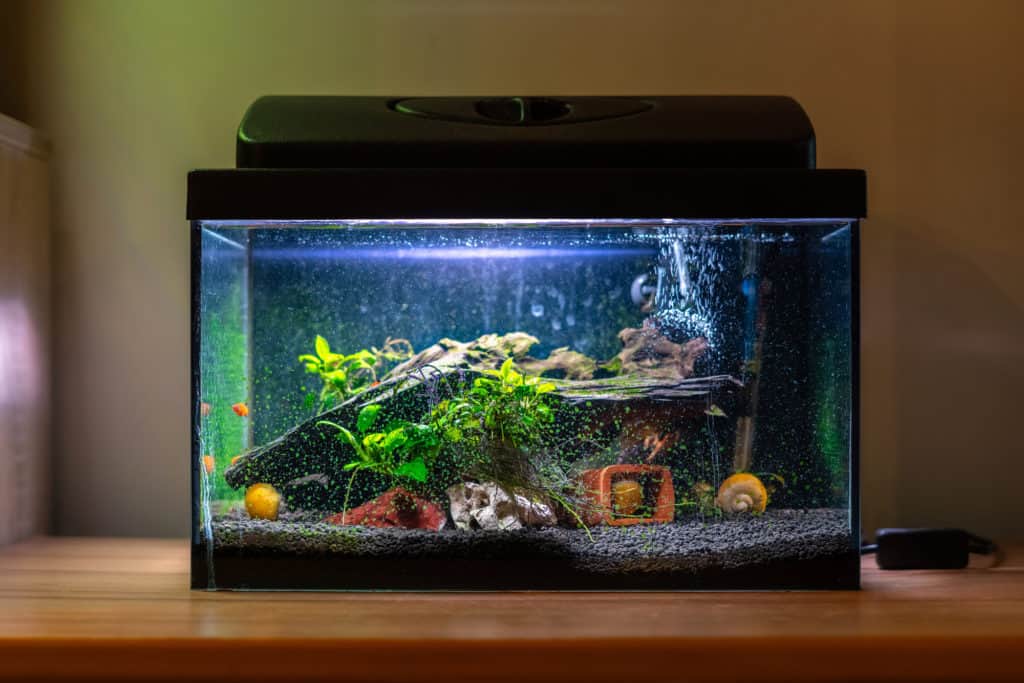
Of course, this discussion on tank sizes and type would be incomplete without a discussion on the filtration needs of freshwater fish tanks vs. saltwater tanks. In general, saltwater tanks require more rigorous filtration than freshwater tanks, so a canister filter is often the best option for this type of tank. If you have a saltwater tank and are looking for a high-quality filter, a canister filter should be at the top of your list.
The Takeaway
At the end of the day, there is no clear-cut answer when it comes to choosing a filter. The best filter for you depends on your specific needs and preferences. What’s your budget? What kind of tank do you have? Are you looking for something that’s easy to install, or do you want to tinker with your filter until you get it just right?
These are all important questions to ask when choosing a filter, and the answer will vary depending on the person. However, if you’re looking for a general rule of thumb, a canister filter is generally a better option than a sump filter. This is because canister filters are more efficient and typically last longer. However, sump filters are cheaper and more customizable, making them a good option for hobbyists on a budget.
If you’re still unsure of which filter is right for you, please feel free to leave us a message in the comments section below. We’d love to help you find the perfect filter for your tank! And if this article helped you in any way, please share it with your fellow fish enthusiasts! Thank you for reading!
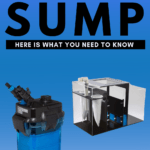
But you can always just hide the canister under the cabinet under the tank so then you don’t have to have a HOB set up in the tank and the fish will have more room to swim around.
Hey, i have just purchased a 6ft tank, has 2 output, 1 input plumbing for a sump filter, am i best getting a sump? thank you